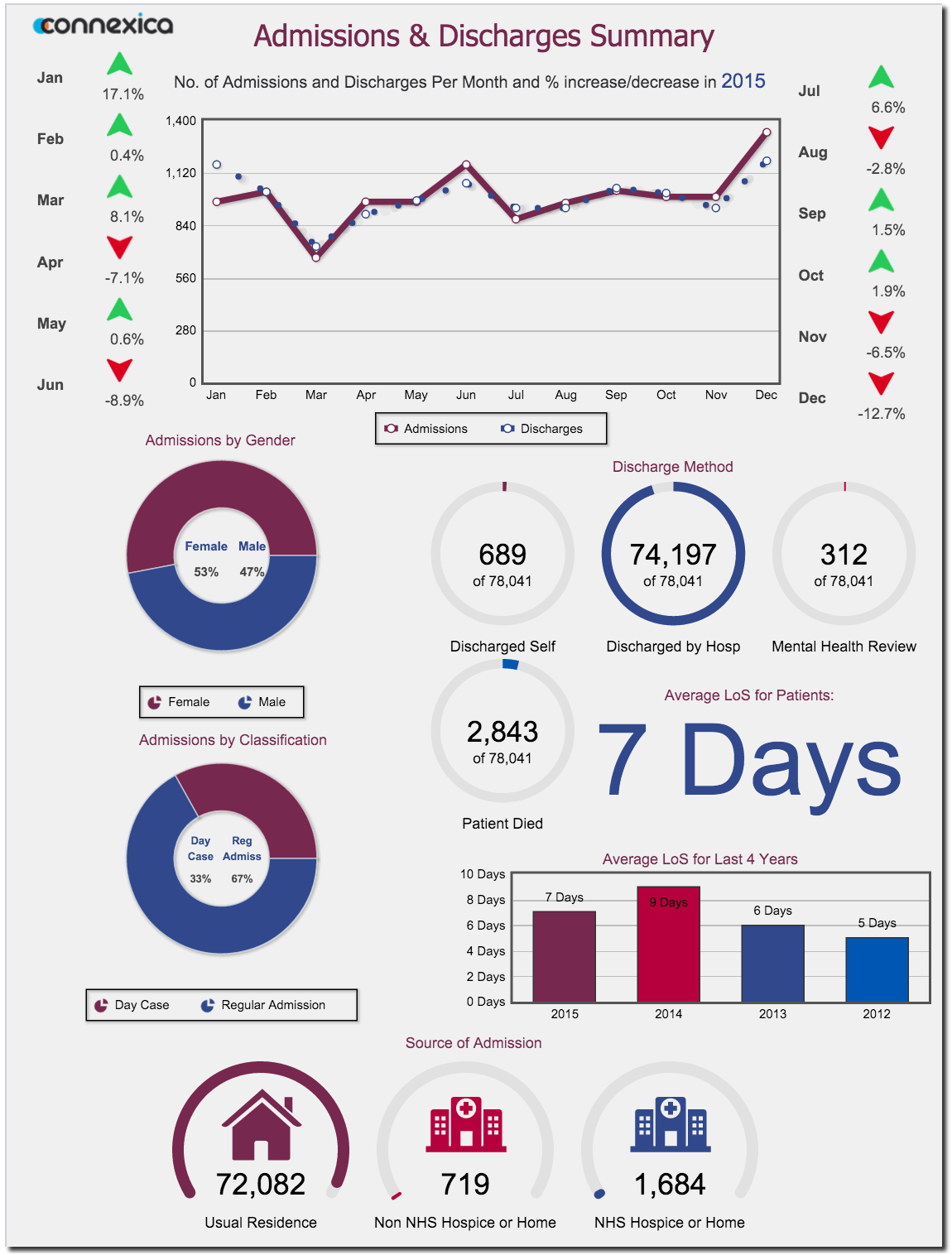Why Healthcare Dashboards are Vital to the NHS
Reading Time: 3 minutes
Access to timely information within NHS organisations has never been more important. With NHS A&E departments regularly missing targets, it was reported last year that for the 12th time in 13 months performance dropped below 95% with A&E departments missing their four hour target to see, treat or discharge A&E patients.
The Carter Review final report and recommendations published on the 5th February identifies the nine key practices that make up the elements needed to develop a successful organisation in which the use of dashboards is discussed. The review states that adopting the model of hospital dashboards with set metrics will provide a balanced view of patient, people and financial performance and will help to achieve the £5bn in savings needed.
Why Dashboards?
Healthcare dashboards provide clinicians and other users with quick and insightful information that allows questions to be answered with near real-time information. Furthermore, it’s easier for a user to visualise important data regarding waiting times on a dashboard than having to manually sit down and churn through data to find the answer.
Picture this: an A&E dashboard with near real time information depicting the current % of patients treated in less than 4 hours, information regarding arrival times, patient gender, age groups and patient groups. Dashboards have the potential to provide useful and actionable information to clinicians giving them all the relevant information needed so they can correct and direct services as required to ensure targets are met and patient care remains high.
The example below shows what you can create in CXAIR with minimal training and little SQL or technical knowledge.
Data Transparency
Healthcare organisations are made up of many different departments from A&E to finance, intensive care to communications including a range of staff from clinicians and executives, with all data often running in disparate silos. Dashboards offer at a glance overviews of organisation and departmental performance, allowing authorised users the ability to drill down to the underlying data and eventually implement improvement initiatives. Many healthcare organisations are now choosing to display dashboards in patient waiting areas and on websites giving patients the ability to choose if they want to wait, access a different service or, if needed, not access any services. This empowers the patient to make their own decision and hopefully reduce the impact on services and in the case of A&E departments, treatment could be found elsewhere such as pharmacists.
How are Healthcare Dashboards Generated?
Dashboards are easy to create and customisable meaning you can view any data you want in any format including charts, cross tabs, diagrams, and infographics.
Three simple steps for creating and sharing dashboards in CXAIR:
- Index – Initially a user has to index their data within CXAIR. This is done by pulling together the datasets you wish to look at within your dashboard, including both structured and unstructured into CXAIR.
- Build – Drag and drop the data you want onto your dashboard and select how you would like to view the data, users are also able to include external documents, websites, maps and images if needed.
- Share – Dashboards can be emailed to other users, displayed on large screens within the hospital, mobile devices or printed.
Creating healthcare dashboards really are and should be that simple!
Peterborough and Stamford has recently implemented CXAIR across their organisation to provide near real-time intelligence on A&E performance, discharge times, high risk patients and more. Early adoption has seen the creation of daily A&E dashboards which allow clinicians and managers to see data from a variety of systems at a glance and interrogate the data in the detail required. Users are now able to monitor and respond effectively and within a timely manner to the care needed within the department.
Healthcare dashboards are shaping the way healthcare organisations digest and interpret data providing actionable and insightful data as and when it’s needed improving standard of care and achieving targets.
For more information about how Connexica and CXAIR can help your organisation, please don’t hesitate to get in touch at info@connexica.com


